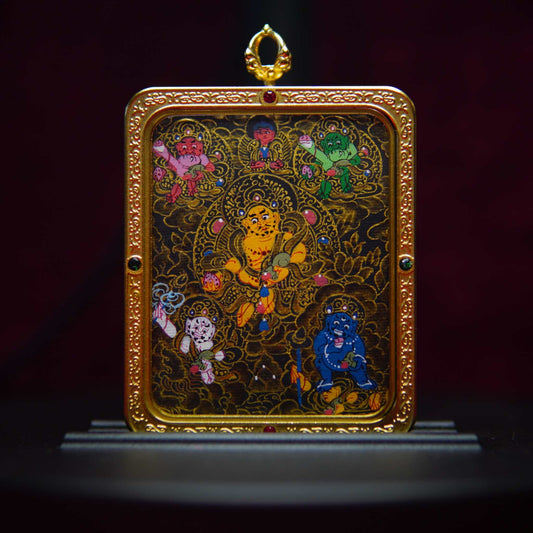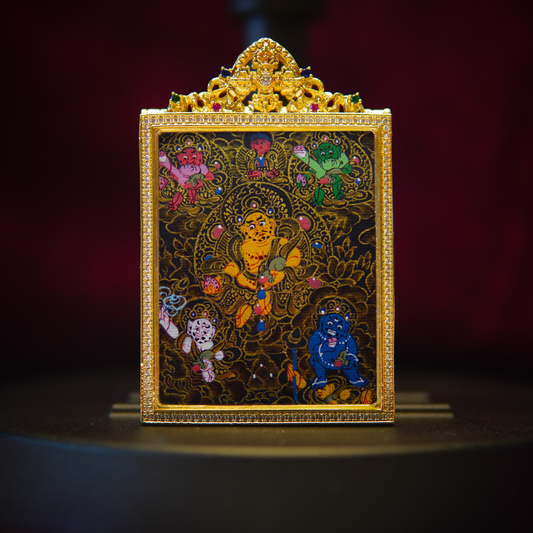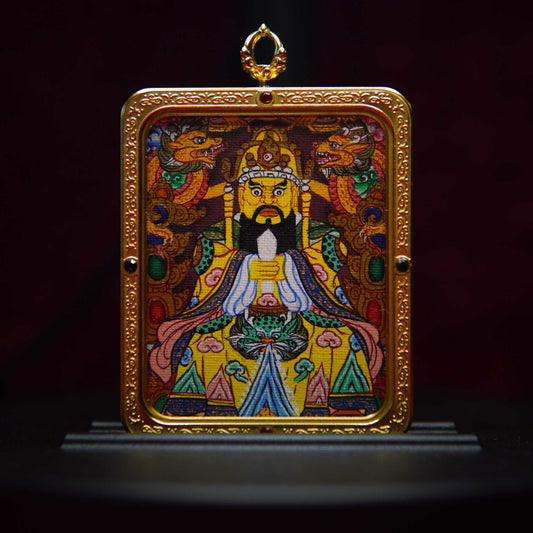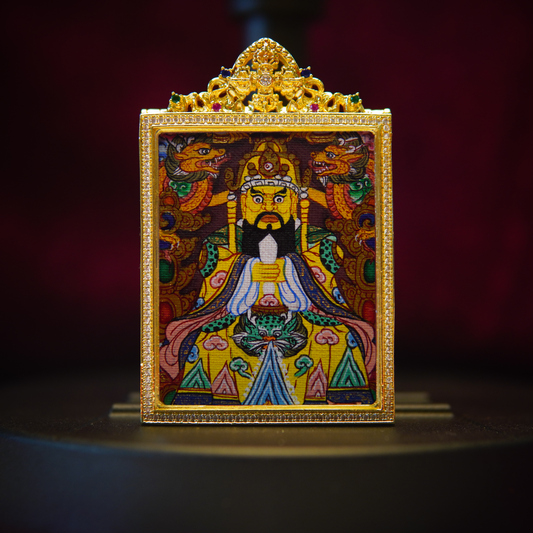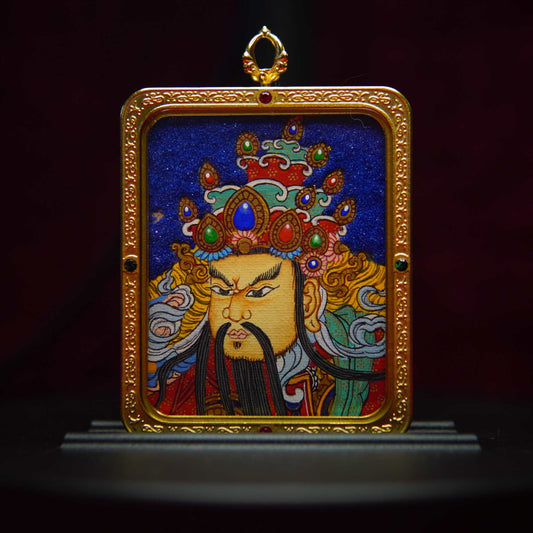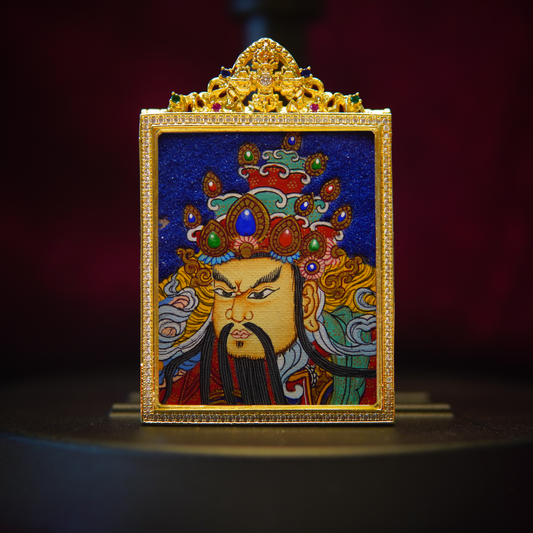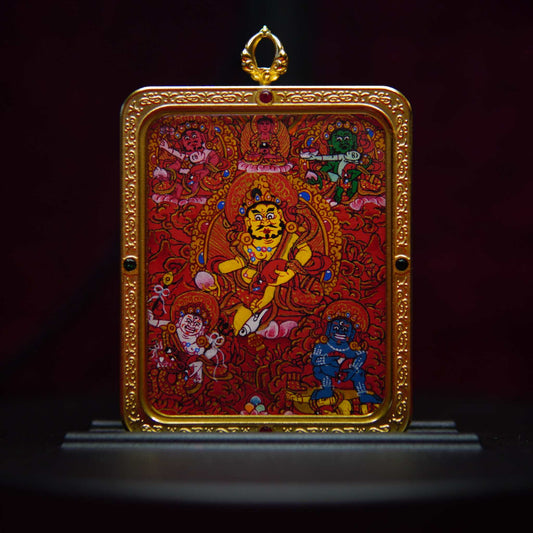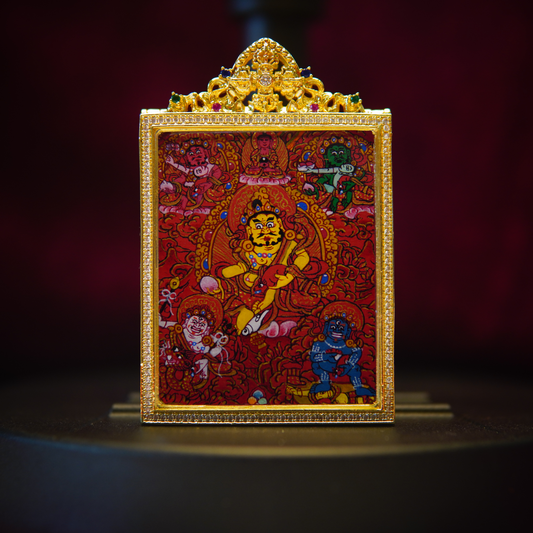Who Is Avalokiteshvara in Buddhism? A Living Symbol of Compassion
Tapita- Who Is Avalokiteshvara in Buddhism? A Living Symbol of Compassion
- 🙏 More Than a Deity: The Compassionate Bodhisattva
- 🌊 What His Name Means
- 🧿 Forms & Faces: From Chenrezig to Guanyin
- ◉ In Tibet: Chenrezig
- ◉ In China & East Asia: Guanyin
- 🔊 His Mantra: Om Mani Padme Hum
- 💎 Avalokiteshvara in Modern Practice
- ✨ Final Thought
In many Buddhist temples across Asia, there is one figure who quietly draws everyone in—not with thunder or fire, but with a calm gaze and open arms. His name is Avalokiteshvara.
Even if you’ve never heard that name before, you might have encountered his presence—perhaps in the form of Guanyin in Chinese temples, or Chenrezig in Tibetan mantras like Om Mani Padme Hum.
But who exactly is Avalokiteshvara? And why does he matter—especially today?
Let’s take a closer look.
🙏 More Than a Deity: The Compassionate Bodhisattva
Avalokiteshvara isn’t a god in the way many Western traditions define one. In Buddhism, he is a bodhisattva—someone who has generated deep compassion and vowed to postpone their own enlightenment until all sentient beings are free from suffering.
That means his mission isn’t to be worshiped, but to help.
He’s not above us. He walks beside us.
🌊 What His Name Means
The Sanskrit name Avalokiteśvara roughly translates to:
“The Lord Who Gazes Down (with compassion).”
He sees every cry for help, every tear, every quiet plea in the hearts of beings. And he answers—not always with miracles, but with presence.
🧿 Forms & Faces: From Chenrezig to Guanyin

◉ In Tibet: Chenrezig
In Tibetan Buddhism, he is known as Chenrezig—the heart of Tibetan devotion. Tibetans believe that the Dalai Lama is his human incarnation.
The most iconic Tibetan form?
A white body, calm expression, and four arms:
-
Two hands in prayer,
-
One holding a lotus,
-
One holding prayer beads.
In more advanced forms, he has 11 heads and 1000 arms, symbolizing his ability to hear and respond to the suffering of all beings at once.
◉ In China & East Asia: Guanyin
In China, Avalokiteshvara underwent a beautiful transformation into Guanyin (观音), often portrayed as female, standing gracefully with a water vase and willow branch. To Chinese devotees, Guanyin is the Goddess of Mercy, a spiritual mother who never turns anyone away.
This shift wasn’t a contradiction—it was an evolution of compassion, expressed in feminine form.
🔊 His Mantra: Om Mani Padme Hum
No discussion of Avalokiteshvara is complete without mentioning his mantra.
Om Mani Padme Hum
“The jewel in the lotus.”
This mantra is chanted millions of times every day by Buddhists around the world. Its meaning?
At its core: compassion, purity, and the path to awakening through love.
💎 Avalokiteshvara in Modern Practice
You don’t need to be a Buddhist to feel something when you look at Avalokiteshvara.
-
He represents the part of you that cares, even when it’s hard.
-
He reminds us that compassion is not weakness, but the strongest force in the universe.
-
In meditation, people use his image to open the heart and soften their thoughts.
Some wear Thangka pendants of Avalokiteshvara to keep that energy close, especially during times of emotional stress, grief, or decision-making.
✨ Final Thought
Avalokiteshvara isn’t just a figure on a painting or a statue in a shrine.
He’s a reminder—quiet, powerful, and deeply human—that no matter how messy the world gets, compassion is still possible.
And in moments when you can’t find it in yourself, his image stands as a mirror:
“You, too, can be the one who sees and responds with love.”

